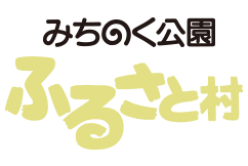How to use timber
This is English site
A variety of products are made according to the thickness of the trunk and the part of wood to be used.
Let us see what parts are used to make wooden products for home use.
Cedar
Cedar is characterized by the clear distinction of colors between the central and surrounding parts. The timber has a straight grain, a somewhat coarse texture, and a particular odor.
With little oil and fat content, the wood is light and soft, which makes it fit for processing. It is used for building parts of houses such as pillars or boards, or materials for furniture, barrels, wooden sandals, and craftwork.
Chestnut
The color in the central part of the wood differs from that in the surrounding part. While the grain extends almost straight, the texture is coarse. As chestnut wood is hard and less prone to rot, it is used in the foundation of houses and was once used for railway ties. Moreover, it is also widely used as sculpture wood and the wooden base for lacquerware.
Japanese cypress
There are not as many differences in color between the central and surrounding parts of this wood. The grain extends straight, and the pattern is dense. The central part is less prone to rot and is waterproof. Its peculiar odor has a germicidal effect, so it also resists damage caused by insects.
The wood is light and soft, so it is used as building materials and also as materials for fittings and furniture.
Zelkova
The central part of this wood is yellowish or reddish brown, while the surrounding part has a yellowish white color and coarse texture. The wood has a straight grain that sometimes forms spiral, detailed and beautiful patterns called tamamoku.
The wood is tough and remains relatively flawless after processing. Thanks to its beautiful grain, it is used for purposes such as construction, furniture making, and sculpting. It is also used to produce drum shells.
Japanese oak
The central part of this wood has a brown color and can be clearly distinguished from the light-brown outer part. The texture is coarse and has an intertwined grain. When the wood is processed into boards, you can see peculiar patterns on the surface called torafu (tiger’s specks). Artisans have made good use of these patterns to produce furniture, flooring, and plywood. In addition, Japanese oak has been widely used, for example, as firewood and charcoal wood.
Paulownia
Both the central and surrounding parts are light brown and have almost the same color tone.
The grain is beautiful, the wood is light and soft, and almost no flaws appear after processing. In addition, the wood does not change very much in size, even when it absorbs moisture, and does not conduct heat easily. Therefore, it is used for products such as fittings, Buddhist altars, and musical instruments. Moreover, chests of drawers and wooden sandals made of paulownia are well reputed.
Beech
Both the central (called shin) and surrounding (called ama) parts are either white or light pink. The wood has a dense texture, and sesame seed-like dark-colored specks can be seen on the surface if it has been processed into boards.
While the wood is rather hard, it is elastic and less likely to break, which is why it is used for making furniture, wooden bases of lacquerware, turnery products, toys, and bent woodwork.
Horse chestnut
There are almost no color differences between the central and surrounding parts, which range from reddish yellowish white to light yellowish brown. The wood has a dense texture, and the finished boards emit a unique silk-like shine.
Light and soft, the wood is easy to process, and is used for furniture, tools, turnery products, and toys.
